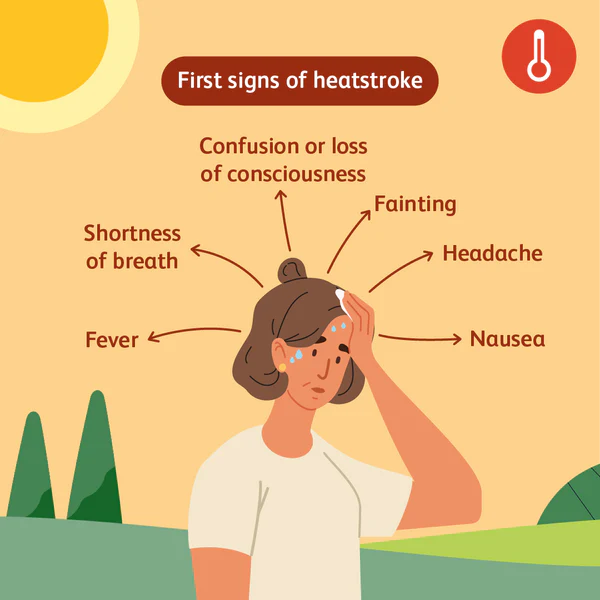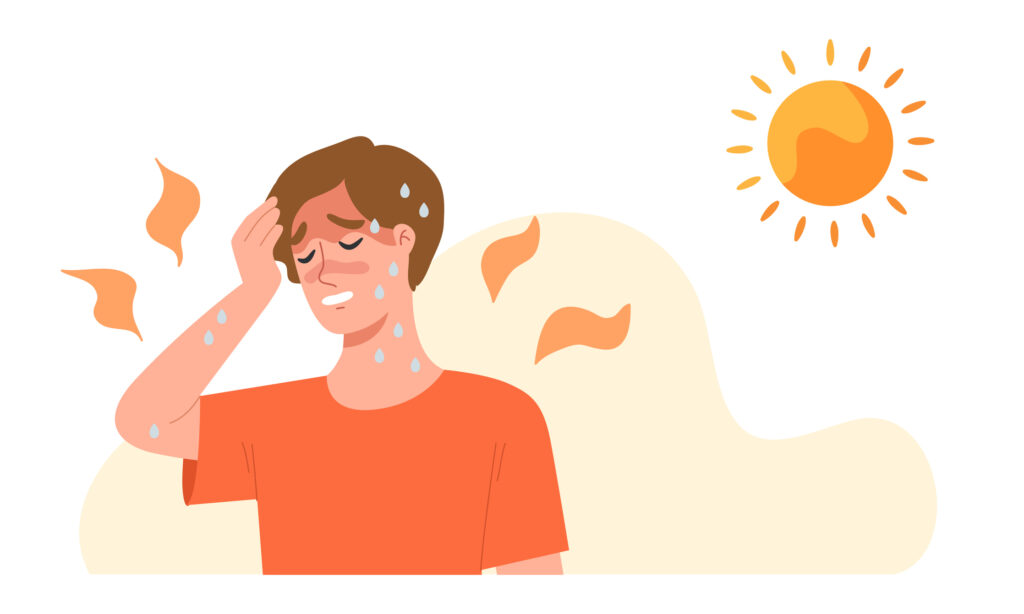Heat stroke is a significant concern in Pakistan, especially during the hot summer months when temperatures can soar to extreme levels. The combination of high temperatures, humidity, and limited access to adequate cooling facilities puts many people at risk of heat-related illnesses, including heat stroke. Heat stroke is a severe heat-related illness that occurs when the body’s temperature regulation system fails, and the body temperature rises to dangerous levels (usually above 104°F or 40°C). It is a medical emergency and requires immediate attention.
Heat stroke is a serious medical condition that occurs when the body’s temperature regulation system fails, resulting in a dangerously high body temperature. It can be life-threatening if not promptly treated. Heat stroke usually occurs when the body is exposed to high temperatures for an extended period, causing the body’s internal temperature to rise rapidly. This can happen during heat waves, prolonged strenuous activity in hot weather, or when exposed to high temperatures in enclosed spaces without adequate ventilation Here are some important tips for preventing and treating heat stroke:
Stay Hydrated
Drink plenty of water, especially when engaging in physical activity or spending time outdoors in hot weather. Avoid alcoholic and caffeinated beverages, as they can contribute to dehydration. staying hydrated is essential for maintaining proper bodily functions, regulating body temperature, and supporting overall health.
Stay Cool
Try to stay in cool, shaded areas during the hottest parts of the day. Use fans, air conditioning, or cool baths to lower body temperature if necessary. Wear lightweight, light-colored clothing to reflect heat and sunlight.Staying cool is important, especially during hot weather or when engaging in activities that can cause your body temperature to rise.
Take Breaks
If you’re engaging in strenuous activity or exercise, take frequent breaks to rest and cool down. Listen to your body and don’t push yourself too hard in extreme heat
Know the Warning Signs
Be aware of the symptoms of heat stroke, which can include high body temperature, rapid pulse, headache, dizziness, nausea, confusion, and unconsciousness. If you or someone you know exhibits these symptoms seek medical attention immediately.

Act Quickly
If you suspect someone is experiencing heat stroke, it’s important to act quickly. Move them to a cooler place, remove excess clothing, and try to cool them down using cool water or ice packs. Call emergency services for further assistance.
Protect Vulnerable Populations
Certain groups, such as the elderly, young children, and individuals with chronic medical conditions, are at higher risk of heat stroke. Take extra precautions to keep them cool and hydrated during hot weather.
Avoid Hot Vehicles
Never leave children or pets unattended in parked vehicles, even for a short period of time. Temperatures inside a car can quickly rise to dangerous levels, leading to heat stroke and even death.y following these tips and staying vigilant in hot weather, you can help prevent heat stroke and stay safe during the summer months.
In conclusion, preventing heat stroke is essential for maintaining good health and well-being, particularly during hot weather or physical exertion. By staying hydrated, keeping cool, dressing appropriately, avoiding strenuous activity during peak heat hours, protecting yourself from the sun, knowing the warning signs of heat-related illnesses, acclimating to the heat gradually, checking on vulnerable individuals, using cooling devices when necessary, and monitoring weather conditions, you can significantly reduce the risk of heat stroke. Remember that heat stroke can be a life-threatening condition, so taking proactive steps to prevent it is paramount. Stay safe, stay cool, and enjoy the warmer weather responsibly.

